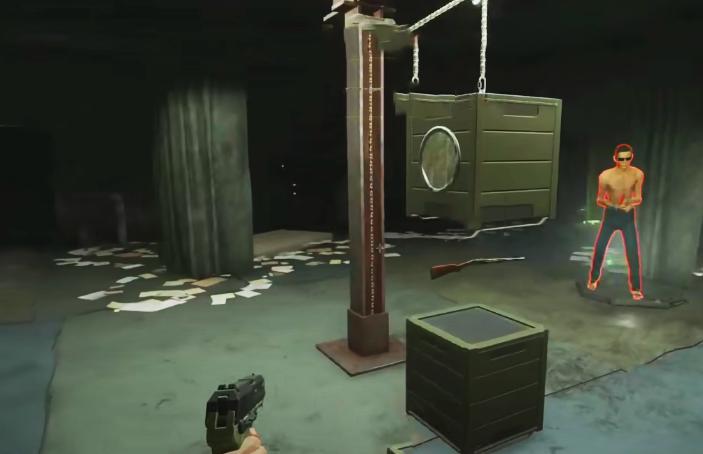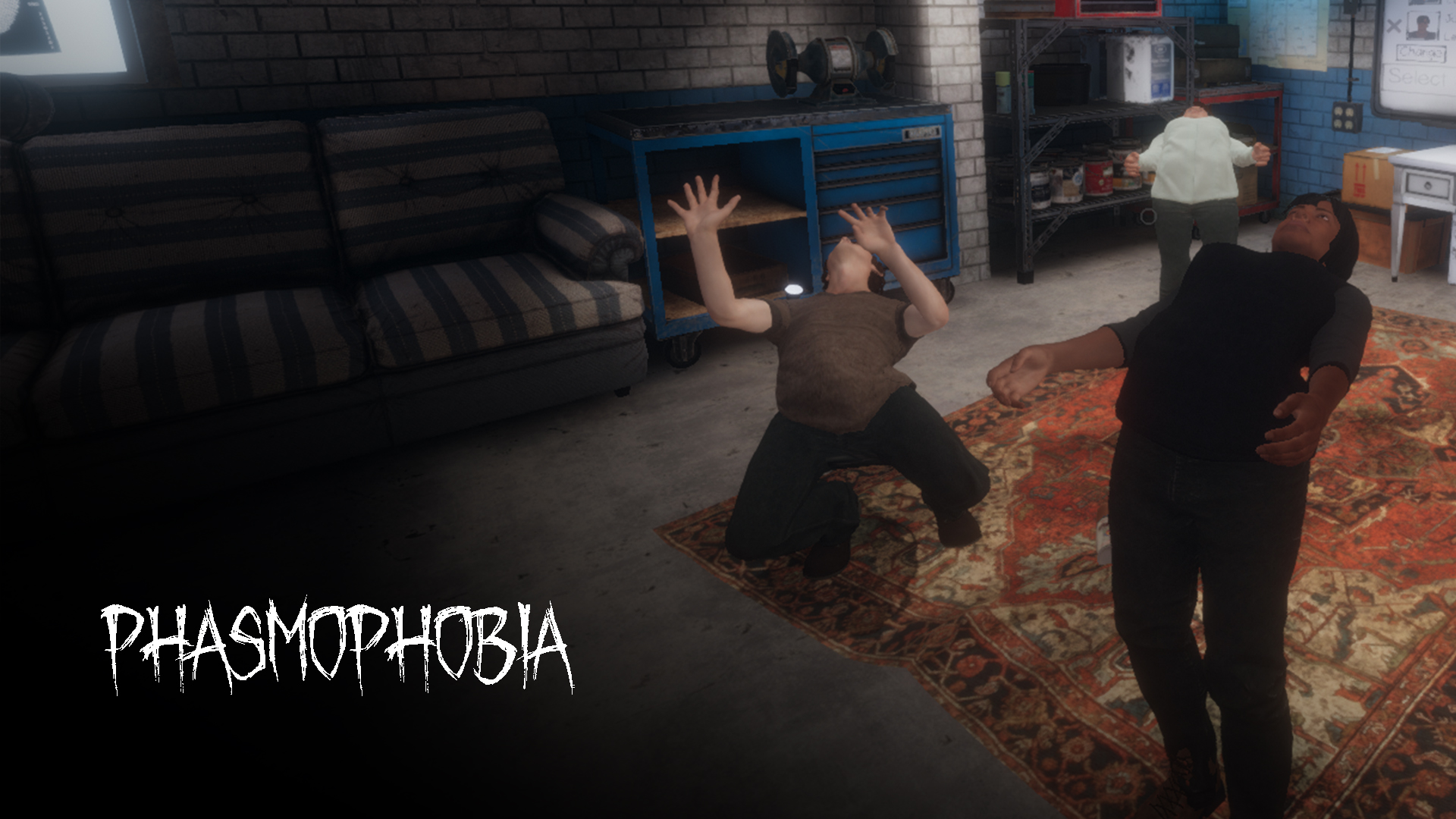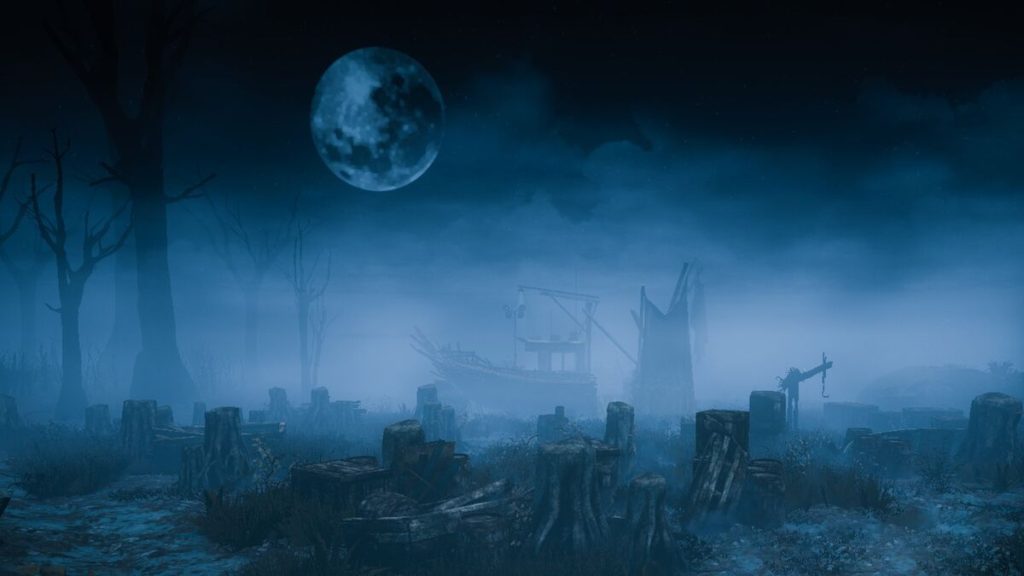Horror games are generally not the first type of game a newcomer to the medium would play alone. Mixing inexperience, lack of direction, and high levels of stress can often lead to a disastrous impression. I would even argue there’s plenty of experienced gamers that avoid the genre because of the stress alone. Yet, when given the chance to participate in a game of Phasmophobia or Dead by Daylight this hesitancy begins to reside. For those unfamiliar with cooperative horror, many of the games of this subgenre tend to have the goal of exploring/escaping a hostile environment. Sometimes the obstacle is an A.I. and in other occasions another player.
What makes Asymmetric Horror funny?
Role-playing. Although these game environments are often thick with creepy atmosphere the developers ability to force certain interactions is limited.
As a result it is easy for the antagonist player(s) to guide the course of the gameplay often escalating into the absurd. This liberal amount of player agency removes one of the strongest methods of invoking fear through weakness; often breaking immersion unless the players give in to the spirit of the game. Players will not feel weak or threatened because they are familiar with the people who inhabit the monster. Deceit attempts to remedy this by instead focusing on paranoia and discord among players with traitorous players discreetly drinking blood bags strewn throughout the map in order to transform. Players can even work together to obtain powerful items, but must choose wisely on who gets to wield them.

This can still backfire though, such as comedic instances where a player is ‘caught in 4k’ drinking blood or someone accidentally kills an innocent. Also because there are only a limited amount of maps more advanced players will start to view the game in a strategic manner superseding their fright. Additionally, for the faint of heart role-playing can serve as a defence mechanism. Instead of screaming in fear, a player might wish to distract themselves from the situation by performing improv or becoming a nuisance to the monster.
What about Cooperative games?
People tend to find solace with company that share in their experience. We can also occasionally find humor in another’s misfortune even if it is cruel. In the setting of play we might give in to more malicious acts than we would otherwise in real life like trapping a friend alone with a monster. This is easiest in games like Labyrinthine where the space is large enough that people can become separated. Likewise a game like Phasmophobia is ripe for metagaming; players with more knowledge may use the unpredictably of the ghosts to their advantage in pranking their friends. It’s also fairly easy to mess around with objects like the spirit box in comedic ways. The game cannot process questions outside of a narrow scope so it may give humorous answers in certain contexts.
Ultimately, these games are too close to most people’s comfort zone to truly be scary; offering various social driven avenues to break immersion. The goal of these game in a way becomes secondary to the players own goals and only serve to bring these players into a common virtual environment.




A factor I think would be interesting to look into, also, is how horror is often heavily dependant on the players experiencing the unknown. With many multiplayer horror games like Dead By Daylight, many experienced players have the leeway to play more comedically because they’re familiar with the environment, the monsters, the gameplay, and have the opportunity to perform, as you said, playing tricks on others. The fog of horror is lessened with familiarity and repetition which can comfortably house comedy. Though, this increased comfort over time can be effectively used to subvert expectations and take a turn to the uncanny with some creative innovation 🙂
I totally agree with you about the comedic effect when multiple players play the same horror game together. This is a very intriguing phenomenon that requires further psychological explanation. One thing worth noticing and comparing is the fact that when multiple players enter a haunted house together in the real life, the fear will decrease a little, yet there is nothing comic about it.
This is really interesting! I found myself thinking much the same thing when we were playing Until Dawn- normally, I’m incredibly affected by horror (I remember being super scared by playthroughs of the game when it was new!), but I wasn’t scared at all during the group play sessions I attended- the jumpscares didn’t even startle me. I think that you’re right that people can use humor as a “defense mechanism” of sorts (we were certainly cracking a lot of jokes), or even just a part of the social experience of playing with friends. It’s harder to take something seriously when you’re laughing at jokes about it or even poking fun at it yourself. I think having other people around makes players feel safer (especially as a lot of horror plays off this fear of isolation, as we saw in Soma and Anatomy), and creates dissonance with the game- how can the player truly be alone, hunted, when their friends are right there?
Do you suggest that agency is given to players in the form of knowing the real life players behind the scary game avatars? Or is it agency given to players given the number of options lent to players in these types of multiplayer games? I like really like this analysis for diving into the ways in which multiplayer-ness subverts goals typically aimed for in the horror genre. I have significantly more comfort watching a horror in which the narrative and actions are directed by myself and people I know. It is a curious though to consider what it would take to make a multiplayer game convey the same sense of helplessness and associated fear to more traditional single-player narrative horror games.
I was really struck by your final comment about the goal of the game becoming secondary to the players’ goals when a game is experienced as multi-player. This got me thinking about games that we usually don’t think about as horror, like Overcooked and Keep Talking and Nobody Explodes, where the game itself isn’t necessarily atmospherically scary, but the emotions of the other players make the game suspenseful. I think your comment about players with more experience with the game further producing “horror” elements is applicable to this kind of game. Usually the more knowledgeable player takes the “leader” role and often times, the fun of instructing (yelling) other players is more underpinned by the game’s goals, rather than in service of it.
It interests me that so many tropes of the Horror genre involve many people. All slasher films have a bunch of high school students who end up getting killed. On the other hand, any game that involves multiplayer co-operative interaction is necessarily going to have that diminished due to horror taking the back seat. I think this is a case of game balance taking priority over the horror experience – DBD would be terrible if the players had as little agency or survival time as they do in horror films. Unfortunately it leads to comedic things like god windows and bullying killers but I think that’s not such a terrible thing, as it does create a lot of really fun moments.
I appreciate your inclusion of Dead by Daylight in this post. I can’t even begin to describe the funny stuff I’ve seen in that game that was probably intended to scare me (Ghostface sneaking around, for example). And because of the multiplayer aspect, so many little inside jokes develop between killers and survivors that it makes it impossible not to laugh sometimes, even while you and your teammates are in the midst of getting slaughtered.
I think the ease with which horror descends into comedy when other payers are introduced to the ‘magic circle’ really goes to show how powerful a tool isolation is in creating and amplifying horror. Imagine, for example, the ending of Soma, experienced in a group. The mere presence of others —even if they couldn’t interact with the game mechanically — would interact with the player psychologically, and in so doing might undermine the striking sense of loneliness and isolation the game attempts to instill in its player.
The ‘cooperative game’ humor dynamic also applies in horror films. Using company to defuse tension or bond over shared irony/humor is common when groups of people get together to watch horror. Many people will watch/play horror socially but not alone; Getting together with friends to watch a scary movie often devolves into jokes and conversations over the movie instead of actually watching it.
This raises a lot of questions about horror games because as I would understand it, this type of disengagement from fear and plot seems like a ‘failure’ of the horror genre to elicit the emotions of isolation, fear, hopelessness, and loss of control that are so commonly emphasized in the narratives.
However multiplayer games put themselves in the position of being ripe for ‘shenanigans’, jokes, and misuse of the game by allowing people to feed off one anothers attempts to cope with discomfort. It disregards the quintessential trope of isolation and immersion in favor of play for the masses. I can’t speak to why this would be the design choice for any given game but I believe it is probably why there aren’t alot of horror multiplayer games out there compares to action/adventure or shooter multiplayers.